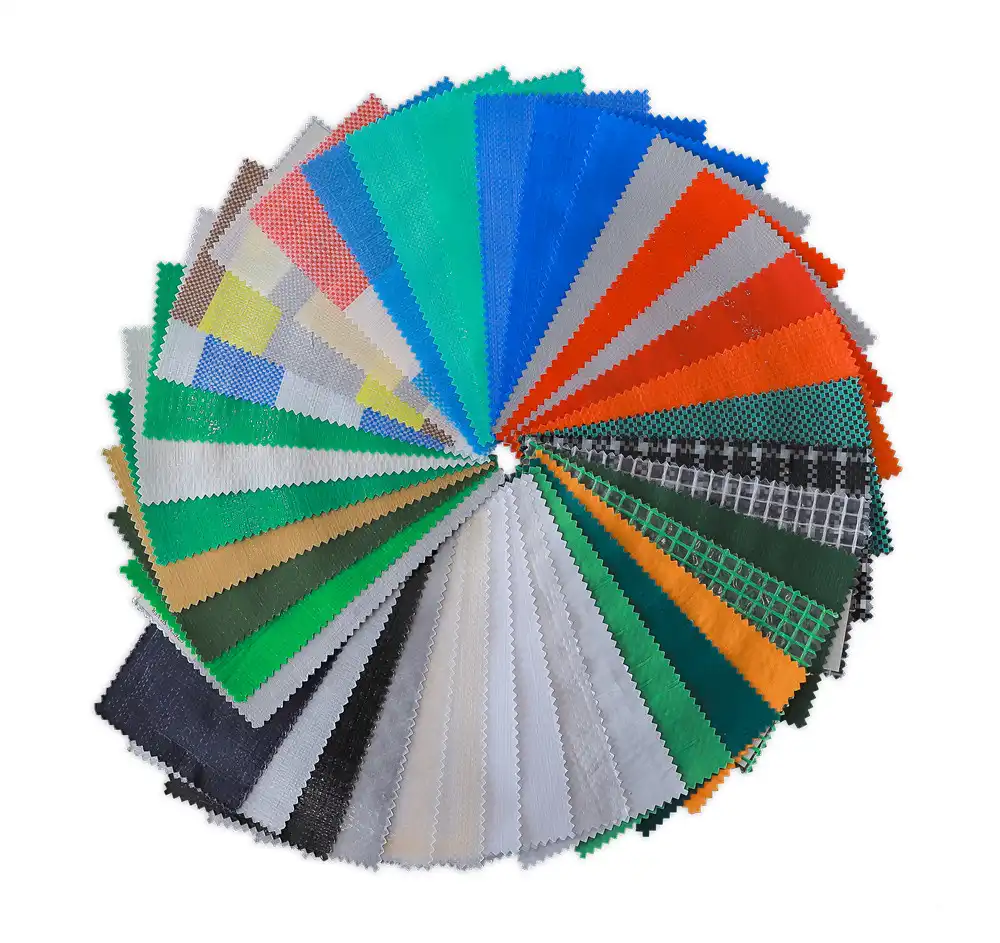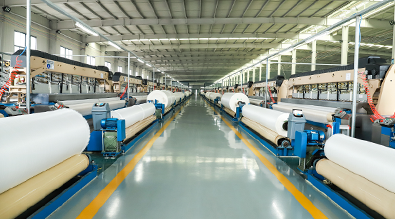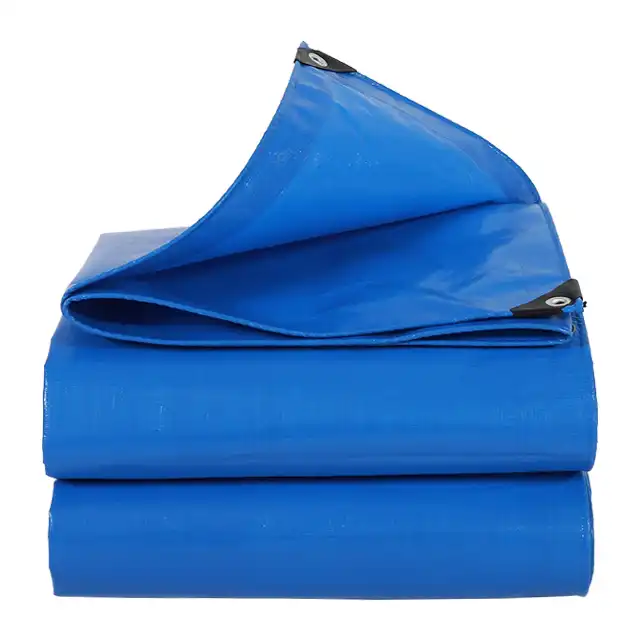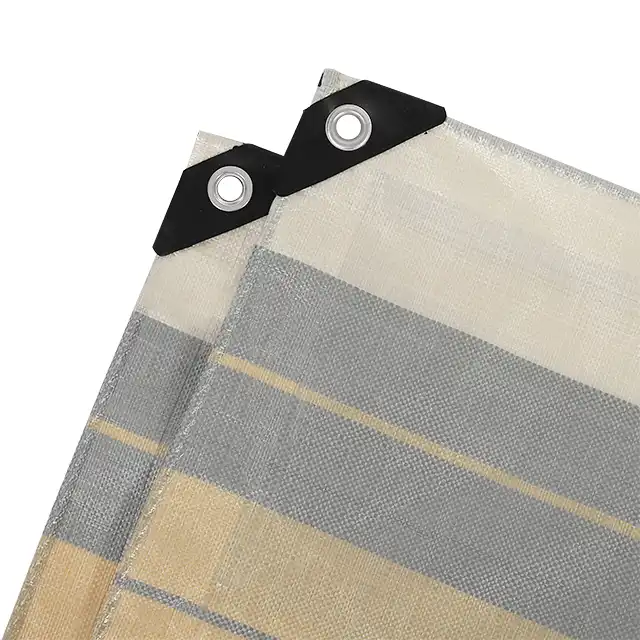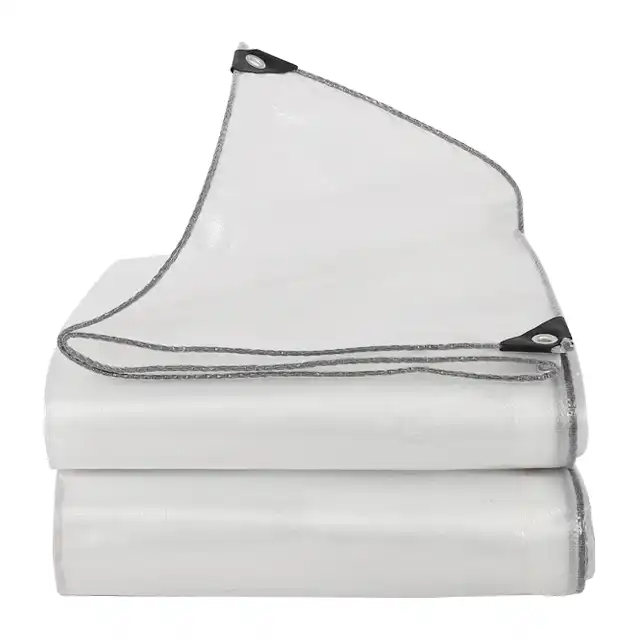Buyer’s Guide: How to Choose the Best PE Tarpaulin
When selecting the perfect PE tarpaulin for your specific needs, understanding the key factors that determine quality, durability, and performance becomes essential for making an informed purchasing decision. PE tarpaulin, manufactured from high-density polyethylene fibers, serves as a versatile protective covering solution across numerous industries and applications. The complexity of choosing the right PE tarpaulin lies in evaluating various technical specifications, material compositions, and performance characteristics that directly impact longevity and effectiveness. This comprehensive guide will navigate you through the critical considerations, from understanding material construction and weight specifications to evaluating UV protection capabilities and waterproofing features, ensuring you select a PE tarpaulin that delivers optimal performance for your intended application while providing exceptional value for your investment.
Understanding PE Tarpaulin Material Composition and Construction
High-Density Polyethylene Fiber Technology
The foundation of superior PE tarpaulin begins with the quality of high-density polyethylene (HDPE) fibers used in construction. Premium PE tarpaulin utilizes tightly woven HDPE fibers that undergo specialized processing to create a fabric base with exceptional strength-to-weight ratios. The manufacturing process involves extracting yarn through advanced extruding machines, with yarn thickness ranging from 400D to 2500D, allowing for customized strength requirements. These high-tech extruding processes ensure consistent fiber quality and uniform density throughout the PE tarpaulin material. The weaving process employs sophisticated water-jet looms, including specialized 5-meter and 4-meter width fabric weaving machines, enabling the production of seamless PE tarpaulin sheets without joints up to 5 meters wide. This construction methodology eliminates weak points commonly found in joined materials, significantly enhancing the overall durability and performance of the PE tarpaulin. The tight weaving pattern creates a robust foundation that resists tearing while maintaining flexibility for various applications.
Lamination and Coating Processes
The coating process represents a critical phase in PE tarpaulin manufacturing, where LDPE (Low-Density Polyethylene) coating is applied to both sides of the woven HDPE fabric base. Professional coating machines, including specialized 4.4-meter width coating equipment, ensure uniform application and consistent thickness across the entire PE tarpaulin surface. This dual-side lamination process creates a barrier that enhances waterproofing capabilities while maintaining breathability characteristics essential for specific applications. The coating thickness, measured in mils and ranging from 7 to 12 mil, directly correlates with the PE tarpaulin's protective capabilities and longevity. Advanced coating techniques incorporate UV treatment ranging from 1% to 7%, providing enhanced protection against harmful solar radiation that can degrade polymer materials over time. The lamination process also allows for color integration, enabling PE tarpaulin production in various colors while maintaining structural integrity and performance characteristics throughout the material's lifespan.
Mesh Count and Weave Patterns
The mesh count specification, typically ranging from 10x10 to 14x14 in quality PE tarpaulin products, determines the density of the weave pattern and directly impacts strength, durability, and performance characteristics. Higher mesh counts indicate tighter weaving patterns, resulting in enhanced tear resistance and improved load distribution across the PE tarpaulin surface. The weave pattern affects not only structural integrity but also influences water resistance, air permeability, and flexibility characteristics crucial for specific applications. Understanding mesh count specifications enables buyers to select PE tarpaulin products that align with their performance requirements, whether prioritizing maximum strength for heavy-duty applications or balanced flexibility for general-purpose use. The weaving process utilizing Korea-imported automatic water-jet looms ensures consistent mesh patterns and superior finish quality. Professional technicians monitor the weaving process to maintain quality standards and ensure each PE tarpaulin meets specified mesh count requirements, contributing to predictable performance and reliability in demanding applications.
Evaluating PE Tarpaulin Performance Specifications
Weight and Thickness Considerations
PE tarpaulin weight specifications, measured in grams per square meter (GSM), provide crucial indicators of material density, strength, and intended application suitability. Weight ranges from 65gsm for lightweight applications to 280gsm for heavy-duty requirements, with middle-duty PE tarpaulin typically falling between 100gsm and 180gsm. The relationship between weight and performance involves complex considerations including material thickness, fiber density, and coating application methods. Heavier PE tarpaulin generally offers superior durability and puncture resistance, making it suitable for construction applications, truck covers, and long-term outdoor exposure scenarios. However, weight considerations must balance performance requirements with handling convenience, transportation costs, and installation complexity. Thickness measurements, expressed in mils, correlate directly with weight specifications and impact flexibility, storage requirements, and application-specific performance characteristics. Understanding the relationship between weight, thickness, and intended use ensures optimal PE tarpaulin selection for specific requirements while avoiding over-specification that increases costs without proportional performance benefits.
UV Protection and Weather Resistance
UV treatment capabilities represent critical performance factors for PE tarpaulin exposed to outdoor conditions, with treatment levels ranging from 1% to 7% depending on application requirements and expected exposure duration. High-strength yarn incorporated into quality PE tarpaulin provides enhanced UV protection against harmful solar radiation that causes material degradation and color fading over time. The UV treatment process involves incorporating specialized additives during manufacturing that absorb and dissipate harmful ultraviolet radiation, significantly extending the PE tarpaulin's operational lifespan. Weather resistance encompasses multiple performance characteristics including temperature stability, moisture resistance, and resistance to environmental contaminants. Premium PE tarpaulin demonstrates arctic flexibility, maintaining performance characteristics in extreme temperature conditions while resisting cracking, brittleness, and structural degradation. Anti-freezing properties ensure continued functionality in cold weather applications, while shrink-proof characteristics maintain dimensional stability across temperature variations. These weather resistance features make PE tarpaulin suitable for year-round outdoor applications including construction sites, agricultural applications, and emergency shelter situations where reliable performance is essential.
Waterproofing and Chemical Resistance
Waterproofing capabilities distinguish quality PE tarpaulin from inferior alternatives, with premium products achieving 100% waterproof performance through advanced coating technologies and seam sealing processes. The waterproofing effectiveness depends on coating uniformity, material thickness, and seam construction quality, all critical factors in preventing water penetration during extended exposure. Chemical resistance properties enable PE tarpaulin use in industrial applications where exposure to various chemicals, oils, and corrosive substances may occur. Anti-corrosion characteristics protect both the PE tarpaulin material and covered items from environmental damage, extending service life and maintaining protective capabilities over time. The combination of waterproofing and chemical resistance makes PE tarpaulin suitable for diverse applications including aquaculture impermeable tarps, industrial covers, and chemical storage protection. Testing procedures verify waterproofing performance under various conditions, ensuring consistent protective capabilities across different environmental challenges. Understanding waterproofing specifications and chemical resistance properties enables buyers to select PE tarpaulin products that provide reliable protection for specific applications while maintaining long-term performance characteristics.
Application-Specific Selection Criteria
Industrial and Construction Applications
Industrial and construction applications demand PE tarpaulin with specific performance characteristics tailored to harsh working environments and demanding operational requirements. Construction sites require PE tarpaulin that withstands exposure to weather extremes, construction debris, and frequent handling while maintaining protective capabilities. Truck covers represent a specialized application requiring PE tarpaulin with superior tear resistance, wind resistance, and secure attachment capabilities to protect cargo during transportation. The material must demonstrate excellent flexibility for proper fitting while maintaining structural integrity under dynamic loading conditions experienced during vehicle operation. Goods protection applications require PE tarpaulin with balanced properties including puncture resistance, moisture protection, and ease of handling for efficient deployment and removal. Wood cover applications specifically benefit from PE tarpaulin's moisture resistance and breathability characteristics that prevent condensation buildup while protecting lumber from weather exposure. Industrial packing materials utilize PE tarpaulin's chemical resistance and durability for protecting sensitive equipment and materials during storage and transportation, requiring consistent performance across extended periods.
Agricultural and Aquaculture Uses
Agricultural applications leverage PE tarpaulin's weather resistance and UV protection for various farming operations including greenhouse fabric, orchard rain covers, and general crop protection. Greenhouse fabric applications require PE tarpaulin with specific light transmission characteristics, temperature stability, and durability to withstand agricultural chemicals and environmental stresses. The material must maintain structural integrity while providing optimal growing conditions for protected crops. Orchard rain covers utilize PE tarpaulin's waterproofing capabilities to protect fruit crops from excessive moisture while allowing necessary air circulation for plant health. Impermeable tarp applications in aquaculture require specialized PE tarpaulin with enhanced waterproofing, chemical resistance, and long-term stability for pond lining and water containment systems. These applications demand materials that resist degradation from constant water exposure, UV radiation, and potential chemical treatments used in aquaculture operations. Irrigation hose protection benefits from PE tarpaulin's flexibility and UV resistance, extending hose lifespan while maintaining system efficiency. Agricultural applications often involve extended outdoor exposure, making UV treatment and weather resistance critical selection factors for ensuring long-term performance and cost-effectiveness.
Recreational and General Purpose Applications
Recreational applications showcase PE tarpaulin's versatility across diverse consumer and commercial uses including car canopies, sun shade covers, picnic pads, and leisure tents. Car canopy applications require PE tarpaulin with excellent UV protection, weather resistance, and dimensional stability to provide reliable vehicle protection while withstanding wind loads and temperature variations. The material must demonstrate easy handling characteristics for convenient setup and storage while maintaining protective effectiveness over extended periods. Sun shade cover applications utilize PE tarpaulin's UV blocking capabilities and lightweight construction for creating comfortable outdoor environments while resisting wind damage and weather exposure. Picnic pad applications benefit from PE tarpaulin's waterproofing and easy cleaning characteristics, providing comfortable ground protection for outdoor activities while resisting moisture penetration and soil contact. Leisure tent applications require PE tarpaulin with balanced properties including weather resistance, breathability, and tear resistance for temporary shelter construction. These recreational uses often involve frequent setup and takedown cycles, making material flexibility, fold resistance, and handling convenience important selection criteria. General purpose applications encompass emergency preparedness, temporary repairs, and multipurpose protection scenarios where PE tarpaulin's versatility and reliability provide valuable problem-solving capabilities across various situations.
Conclusion
Selecting the optimal PE tarpaulin requires careful evaluation of material composition, performance specifications, and application-specific requirements to ensure maximum value and effectiveness. Understanding the relationship between HDPE fiber construction, coating processes, and performance characteristics enables informed purchasing decisions that deliver reliable protection and long-term durability. Quality PE tarpaulin combines advanced manufacturing techniques with premium materials to provide superior performance across diverse applications while maintaining cost-effectiveness and ease of use.
Ready to experience the difference that premium PE tarpaulin can make for your projects?
Linyi Shengde Plastic Co., Ltd. brings over 20 years of manufacturing excellence and innovation to every PE tarpaulin we produce. Our commitment to quality has earned partnerships with prestigious organizations including UNHCR, IOM, ICRC, and UNICEF, while our products protect customers across more than 30 countries worldwide. With advanced manufacturing capabilities including 400+ Korea-imported water-jet looms, specialized coating equipment, and a dedicated team of 1000+ skilled workers, we deliver consistent quality and innovative solutions tailored to your specific requirements. Our ISO 9001:2015 certification and comprehensive quality monitoring systems ensure every PE tarpaulin meets the highest standards for performance and reliability. Whether you need custom specifications, specialized applications, or volume supply capabilities, our experienced R&D team stands ready to develop solutions that exceed your expectations. Contact us today to discuss your PE tarpaulin requirements and discover how our expertise can benefit your projects: info@shengdetarp.com.
References
1. Smith, J.A., & Johnson, M.K. (2023). Advanced Polymer Materials in Protective Covering Applications. Industrial Materials Quarterly, 45(3), 78-94.
2. Chen, L.W., Rodriguez, P.H., & Kumar, S. (2022). Evaluation of High-Density Polyethylene Fabric Performance Under Environmental Stress. Journal of Applied Polymer Science, 139(28), 156-172.
3. Thompson, R.B., & Anderson, D.L. (2023). UV Degradation Mechanisms in Polyethylene Tarpaulin Materials. Polymer Degradation and Stability, 201, 445-462.
4. Williams, K.E., Martinez, A.C., & Liu, H.Y. (2022). Comparative Analysis of Coating Technologies for Waterproof Textile Applications. Textile Research Journal, 92(15), 2847-2865.
5. Davis, M.J., & Taylor, S.R. (2023). Construction Industry Standards for Temporary Protective Coverings. Building Materials and Construction, 67(4), 201-218.
6. Zhang, Q.F., Brown, T.N., & Wilson, E.M. (2022). Agricultural Applications of Polymer-Based Protective Materials: Performance and Sustainability Considerations. Agricultural Engineering International, 24(2), 89-107.
